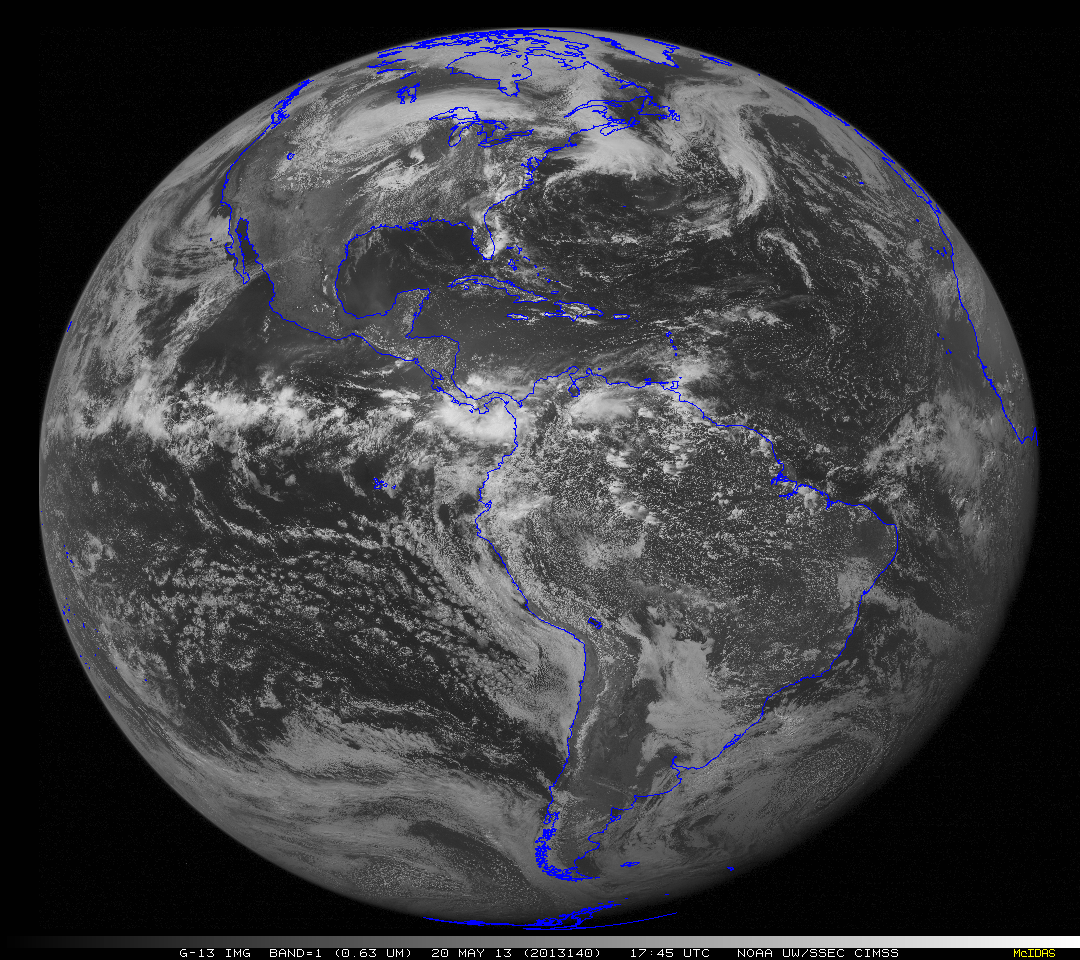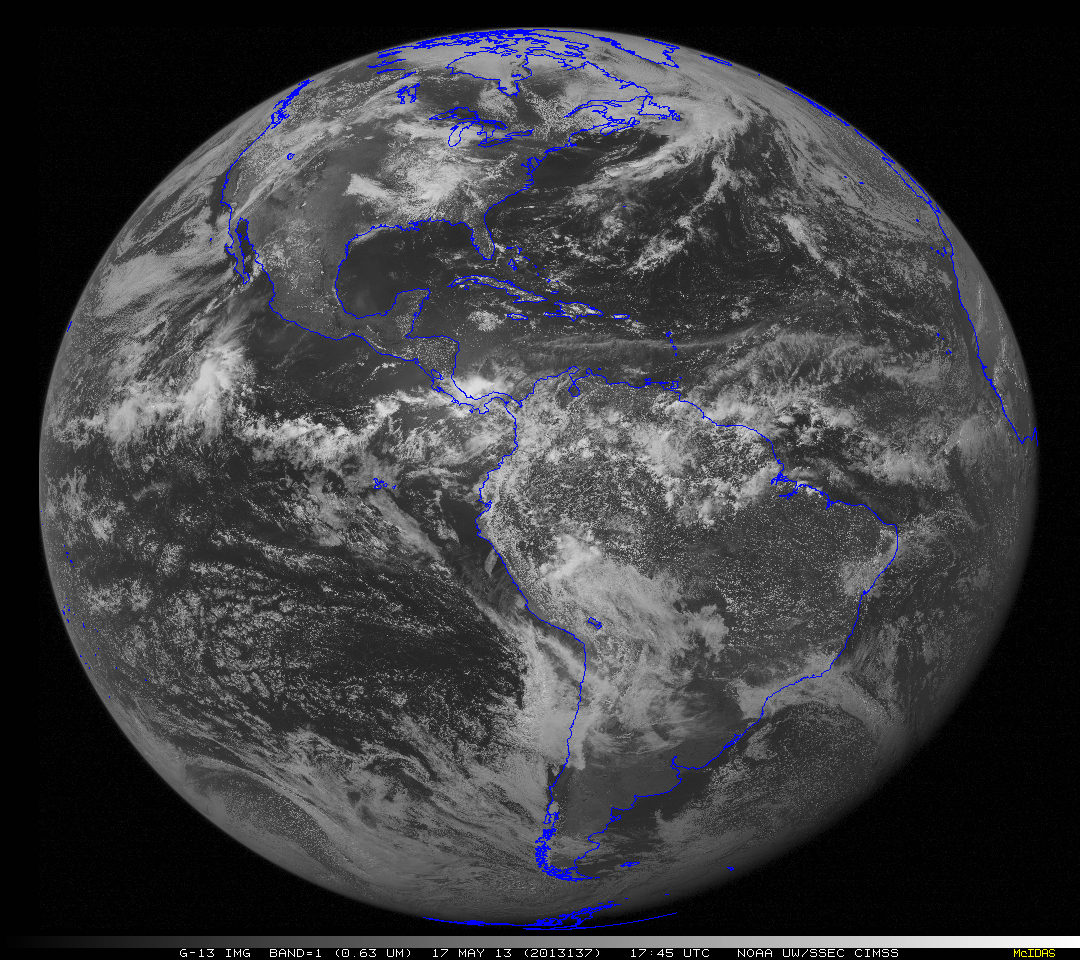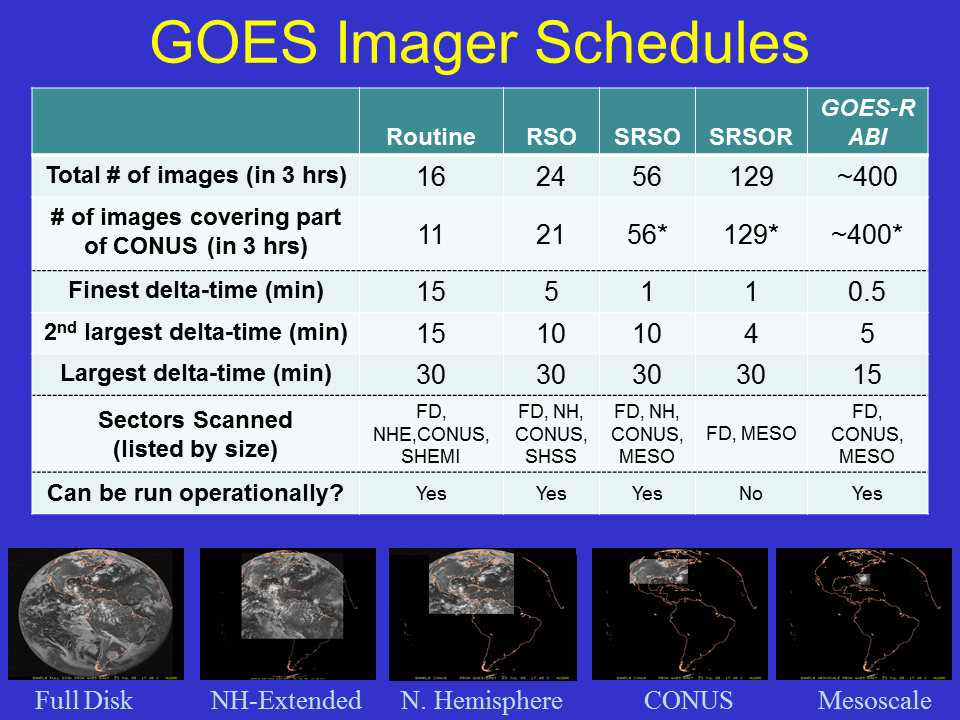GOES-13 (GOES-East) Scanning Strategies
In normal or “Routine” operations, GOES Imagery (from both GOES-East and GOES-West) follows a schedule that includes scans of CONUS (Continental US) nominally every 15 minutes.
For GOES-East, these are images at :02, :15, :32 and :45 after the hour. The :02 and :32 images are CONUS only: the southern boundary is the central Caribbean Sea and the eastern boundary stretches from Newfoundland to the Windward Islands. The :15 and :45 images include the entire north Atlantic Ocean and stretch southward to 20 S latitude (these are called ‘Northern Hemisphere Extended’). Full-disk images are produced every three hours (02:45, 05:45, 08:45, 11:45, 14:45, 17:45, 20:45 and 23:45 — all times UTC). The Full-Disk image takes 26 minutes to scan and that means a CONUS scan does not occur during the Full-disk scan. In routine operations, after the CONUS scan at :02 and :32 minutes past the hour, a South American scan over Chile and Argentina occurs (starting at :09 and :39 minutes past the hour). On a ‘normal’ day, nearly 130 images are produced by the Imager of GOES-13; of these, 87 are CONUS. An example of the Routine scan sectors is shown above (also available as a QuickTime movie), and a diagram of the Routine scan sectors is also shown here.
There is also daily ‘station-keeping’ during which times (00:34-00:40 and 15:30-15:45 for GOES-13) system scheduling, diagnostics and maintenance are performed.

GOES-East “Rapid Scan Operations (RSO)” scan sectors (covering a 6-hour period from 17:45 to 23:45 UTC)
During GOES-East Rapid Scan Operations (RSO), scanning of the Southern Hemisphere is curtailed sharply. The Northern Hemisphere Extended imagery at :15 and :45 is replaced by images that extend only to the Equator (and take 9 minutes to scan, versus 14 for the Northern Hemisphere Extended). The only Southern Hemisphere imagery scanned — other than the full disk image every three hours — is a small segment over the tropical eastern Pacific, the Southern Hemisphere Short sector that provides information for Sea surface temperature estimates. These images are produced hourly on the half-hour and take less than two minutes to scan. RSO operations yields CONUS imagery from GOES-13 at :02, :10, :15, :25, :32, :40, :45, and :55, every hour, except when the full disks are scanned at times noted above, in which cases the :55, :02 and :10 imagery are not scanned. RSO imaging produces almost 160 images; more than 120 of those are CONUS. An example of the RSO scan sectors is shown above (also available as a QuickTime movie), and a diagram of the RSO scan sectors is shown here.
During Super Rapid Scan Operations (SRSO), southern Hemisphere scanning includes only the every-three-hour Full Disk image. Northern Hemisphere scanning continues (:15 and :45), the CONUS scans are shifted slightly (:59 and :30) and small sectors are scanned at one-minute intervals (the one-minute interval determines how many lines can be scanned). These are at :04, :05, :06, :07, :08, :09, :10 or :11, :12, :25, :35, :36, :37, :38, :39, :40, :41 or :42, :43 and :55. An example of SRSO scan sectors is shown here (QuickTime movie), and a diagram of SRSO sectors is shown here. During a few days in August-October 2012 and also in June and August 2013 GOES-14 will be performing Super Rapid Scan Operations for GOES-R Super Rapid Scan Operations for GOES-R (SRSOR) scans (SRSOR image viewer).
The link for GOES-East scheduling is here.
The table below presents the schedules for GOES-East for the different operations: Routine, Rapid-Scan Operations (RSO), Super Rapid-Scan Operations (SRSO), Experimental Super Rapid-Scan Operations for GOES-R (SRSOR), and GOES-R ABI (GOES-R is scheduled to launch in 2015).



